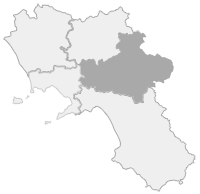It never left the woods of the Irpinia that bears its name. The gray wolf has lived there since homo sapiens had yet to learn the first rudiments of agriculture.
According to legend the wolf guided the Samnites, who called him hirpus, to their new land on the mountains. Populated by many species of amphibians, reptiles, birds and mammals, small and large. Among them there is the super predator to whom nature entrusted a fundamental role in maintaining the balance of the environment. And canis lupus italicus is a very ancient subspecies of the gray wolf that was formed right in the Apennines, from which it spread first to the Alps and then beyond, always conquering more and more space in Europe. A population in constant growth and expansion, until man in the last centuries of a thousand-year history identified it as an enemy to be destroyed.
In Campania was Gioacchino Murat that started prizing those who killed wolves. An extermination that even in Irpinia made it a very rare animal. Up to making it almost invisible, partly due to its nocturnal hunting habits and partly because it is relegated to increasingly restricted areas and far from the now territory of the men. But even in the darkest times, the forests of the Picentini mountains and the Partenio massif have continued to hide and guard the few, sparse specimens that survived extinction. And when, starting from the 1970s, wolves became a protected species in Italy, the Irpinia's population also began to recover. As evidenced by the growing sightings of wolves also in areas outside the natural parks (in which they are notoriously present) and near the inhabited centers. Recently, the Monti Picentini National Park has launched a wolf conservation project to register the specimens and the small groups in which they are aggregated and learn more about their habits, also for the purpose of better protection.
Copyright video, foto e testi © 2020




Comments powered by CComment